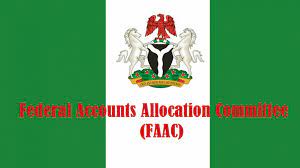Stories by Amaka Ifeakandu
Lagos
The Debt Management Office, DMO, has said that the Federal Government has finalised arrangement to issue N10.75 billion sovereign green bond, the first ever in Nigeria and Africa.
The bond opens to the investing public on Monday 18th December 2017, and closes on Thursday 21st December 2017.
The bond is expected to be used to finance renewable energy projects, energising education programme and forestation programme.
Speaking in Lagos at the investors forum presentation of the green bond, the Director General of DMO, Patience Oniha, said “The Federal Government is ready to raise N10.75 billion Series 1 issuance under the N150 billion green bond programme. The macro environment is improving , as we can see the country has come out of recession from second quarter, and third quarter, the Gross Domestic Product, GDP has improved , even though at low pace. But that shows that the outlook looks brighter for Nigeria. Also the external reserve is also on the increase, which will help boost the stability of our currency with increase in foreign investor confidence.”
Speaking further she said “The DMO strategy is to continuously restructure the Federal Government’s debt portfolio to replace short tenured bonds with long tenor and high rates with lower rates.
This strategy includes the tapping of the international capital markets and a green bond issuance with the right framework. We set 60 per cent domestic and 40 per cent external borrowing target in order to have diversity and not to have one source of finance. It is our hope that this green bond offer would be oversubscribed given the benefits to investors and the country in general.”
In her presentation, Hajia Halima Buhari, a representative from the Ministry of Environment, said: “The Ministry of Environment in collaboration with the Ministry of Finance have initiated action towards the issuance of Nigeria’s maiden sovereign green bond. Nigeria’s emissions are expected to grow by about 900 million tonnes per year in 2030, which translates to about 3.4 tonnes per person. Our aim is to reduce emissions by around 45 per cent.”
According to her, “ The following work streams have been completed in furtherance of the green bond project: Development of guidelines Identification of qualifying projects Establishment of an Inter-Ministerial Committee on Climate Change comprising of key applicable Ministry Department Agencies, MDAs key requirements for the bond issuance include: The projects should be green in nature Project costs should form part of the Medium Term Sector Strategies (MTSS) of selected MDAs The project should have a defined revenue model or economic impact that generates resources that will be used to service the green bond The emissions contributions of the projects should be calculated and documented .The ministry also set up a Green Bond Private Public Sector Advisory Group (“GB-PPSAG”) to support this process The GB-PPSAG comprises of development partners, relevant regulators, capital market operators and MDAs The process should also enable the country tap into the growing global market for green bonds which is estimated to reach USD150 billion by the end of 2017.”
She said Green Bonds can also be defined as debt instruments issued to raise capital to fund specific clean power projects or projects aimed at reducing climate change risk.
She explained that the bond arose out of investors’ need to invest in high-growth, clean energy sector projects other than through equities and funds, adding that the implementation of green bonds does not require the debt recourse or financial backing to be necessarily tied to a specific green project.
Explaining further she said “majority of green bonds in circulation are green “use of proceeds” bonds and are backed by the issuers’ entire balance sheet…and this allows investors to benefit in investing in green initiatives without taking the additional risk of the success or otherwise of that specific green project, as the bonds are still backed by the issuers’ balance sheet.”
Meanwhile, the total value of green bonds issued worldwide in 2016 was $81billion, a 92 per cent growth from the value issued in 2015. The global market for green bonds is expected to reach $150 billion by the end of 2017 and $1 trillion by 2020.
On his own part, representative of Chapel Hill Denham Advisory Limited, the Lead Financial Adviser to the Federal Ministry of Environment Green Bond , Muhammad Mamman-Daura, said: “ The Green Bond will be listed on the Nigerian Stock Exchange, NSE and FMDQ OTC Exchange. The proceeds of the Bond will be allocated as follows: Renewable micro utilities N150 million; Energising education programme N8.5 billion and Forestation N1.9 billion. The minimum subscription is N10 million, with subsequent increase of N1 million.
“The benefits include: Provides competitive investment returns relative to conventional bonds. Strong investment grade ratings; Avoid the runaway costs of climate change; Create jobs via renewable energy initiatives such as providing solar powered systems for rural electrification; Deliver benefits to low-income households; Save households and business money due to the eventual resulting drop in energy and electricity bills, among others.”



